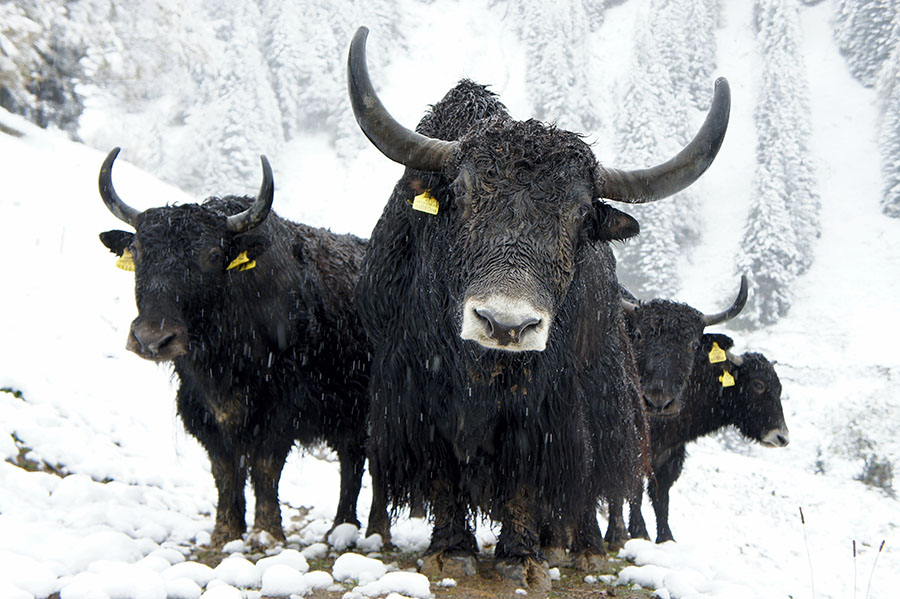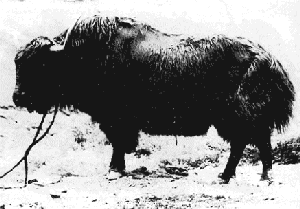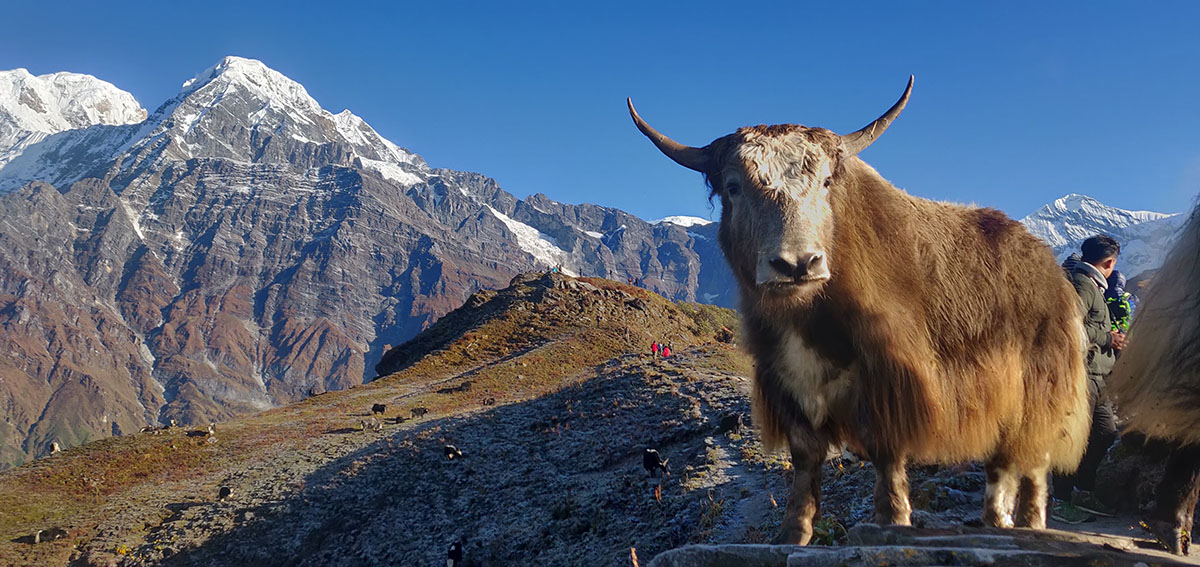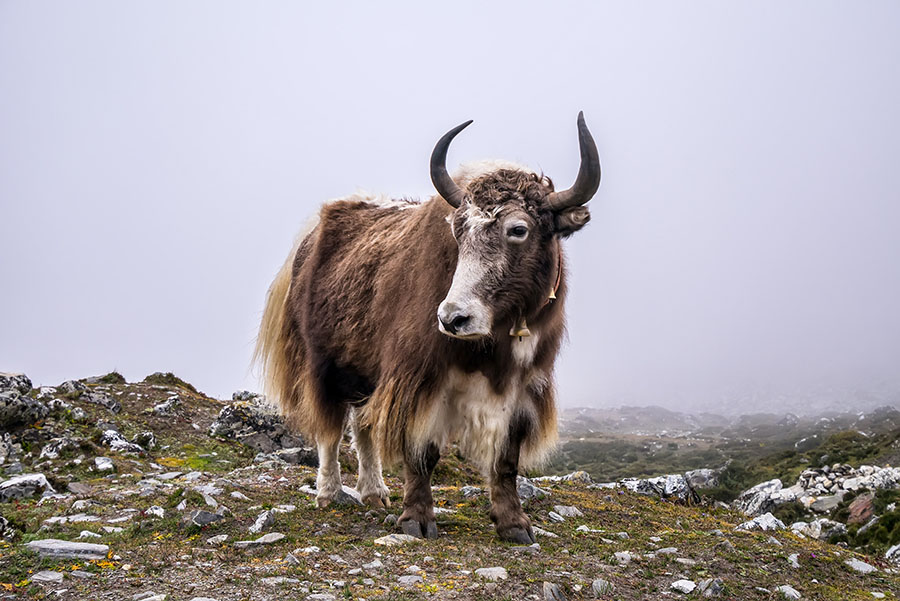Yak
The Yak originates from Eastern Asia around Tibet from where it has been introduced to several other places such as China, Mongolia, Nepal and Central Asia. There are approximately 12 million yaks in China, making up 85% of the world Yak population. Yaks are located mainly in the high, cold mountainous areas of China. Yaks can graze on the alpine grasslands in the summer and during the winter on the shrubs in deep snow in rigorous temperatures. The horns are used to reach the grass underneath the snow. The yak loses weight during the winter but recovers and gains weight rapidly with the coming of spring grass. The yak's long coarse hair acts as insulation for their body. The animals also grow a dense woolen undercoat for winter protection. The wild yak is slightly larger than the domesticated yak, standing at 2 meters from the shoulder. They are very similar in appearance to the Bison which also has long coarse hair and high shoulders.
Research workers claim there are three types of yak in China. They are:
- Valley: Mainly distributed in the valleys of North and East Tibet, as well as in some parts of Sichuan and Yuman provinces. An example is Jiulang.
- Plateau Grassland: Mainly distributed in the high, cold pastures and steppes, with an animal mean temperature below degrees Celsius. Examples are the Maiwa and Luqu.
- White Yak: Found in almost every region of district. An example is the Tianzhu White Yak.
Work
Yaks are mainly used for packing in transport; they may travel 20-30 km per day with a load of 130 lbs. on the high, cold steep mountainous paths. This gives them the reputation of the "Ships of the Plateau". It is thought that the yak was first domesticated to be caravan animals for the Himalayan trade routes because they can breathe three times more oxygen in their lungs than cattle and can travel long distances in such high altitudes.
Meat Production
They have a dressing percent of 45-54%. Yak meat, from either white or black yaks, has a special flavor and if adequately processed and canned, it is much appreciated in China and as an export.
Milk Production
Milk is of economic importance in yak raising. Milk generally starts 10-15 days after calving, which occurs in April and May, then continues for 5 months until winter comes. Production is highest in July, when grass is abundant and nutritious, then declines as the grass dries off gradually before or in October.
References
Cheng. P. (1984) Livestock Breeds of China. Animal Production and Health Paper 46 (E, F, S). Publ. by FAO, Rome, 217 pp.
"yak". Encyclopedia Britannica. Encyclopedia Britannica Inc., 2015. Web. 30 Jul. 2015





